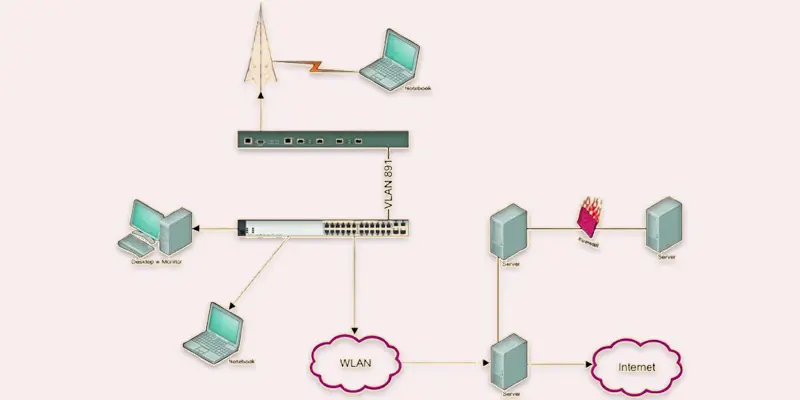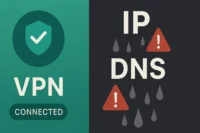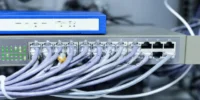SD-WAN Failover Explained | Boost Network Resilience
Published: 30 Apr 2025
SD WAN Failover
Did you know that businesses lose thousands every year due to internet downtime? But what exactly is SD-WAN Failover, and why does it matter so much? If you’ve ever lost a video call, paused a cloud app, or stressed over a dropped connection, you’re not alone. Whether you’re sipping coffee at your desk or handling customer data, SD-WAN Failover steps in to keep things running when your main link goes down.
What Is SD-WAN Failover
SD-WAN Failover is a feature that keeps your internet working if one connection fails. It quickly switches to a backup link so your apps, calls, and websites stay online without any breaks.

| Examples of SD-WAN Failover |
|---|
Here are some quick examples of SD-WAN Failover
|
Here’s a list of how SD-WAN Failover works using just the key steps or components:
- Link Monitoring
- Failure Detection
- Traffic Rerouting
- Automatic Switching
- Load Balancing
- Policy-Based Routing
- Real-Time Analytics
Link Monitoring
Link Monitoring means the SD-WAN keeps checking your internet connections all the time. It looks for slow speeds, drops, or outages to act fast.
Failure Detection
Failure Detection is when the SD-WAN quickly notices if one of your internet connections stops working. It then prepares to switch to a backup link right away.
Traffic Rerouting
Traffic Rerouting means the SD-WAN automatically sends your internet traffic to a different, working connection if the primary one fails. This keeps everything running smoothly without interruption.
Automatic Switching
Automatic Switching is when the SD-WAN instantly switches to a backup connection as soon as it detects a problem with the main one. This ensures there’s no downtime for your internet.
Load Balancing
Load Balancing is when the SD-WAN spreads your internet traffic across multiple connections. This helps avoid overloading one link and keeps things running faster and smoother.
Policy-Based Routing
Policy-Based Routing is when the SD-WAN decides which internet connection to use based on rules you set. For example, it can prioritize important apps or routes traffic through a backup link during high traffic.
Real-Time Analytics
Real-Time Analytics means the SD-WAN constantly checks and analyzes your internet performance. It helps detect issues instantly and ensures your network runs smoothly without delays.

| Benefits of SD-WAN Failover |
|---|
Here are the benefits of SD-WAN Failover
|
Setting Up SD-WAN Failover (Simple Steps)
Setting up SD-WAN Failover is simple and involves just a few steps. First, choose an SD-WAN provider that supports failover features. Next, connect at least two internet links, like fiber and 4G, to your SD-WAN device.
Then, configure failover rules to decide which link is primary and which one is backup. Once everything is set, test the failover process to make sure it works properly—this ensures your traffic switches seamlessly when needed. Regularly testing the setup will give you peace of mind that your business stays connected even if one connection fails.
Common Failover Scenarios
Internet Outage from Main ISP: If your main internet provider has an outage, SD-WAN Fail-over will switch to a backup connection, like 4G, to keep everything online.
Hardware Failure: If a router or other equipment breaks down, SD-WAN will reroute traffic to another working device without causing downtime.
Network Congestion: During peak usage times, SD-WAN can move traffic to a less busy connection, ensuring smooth performance without slowdowns.
In another scenario, Cloud App Issues like a slow connection to a service (e.g., Microsoft Teams) can be fixed by switching to a faster backup link. SD-WAN ensures that employees don’t face interruptions, even when their main connection has issues.

Conclusion About Fortigate SD WAN Failover
SD WAN failover is essential for maintaining network reliability and minimizing downtime. After evaluating its benefits, I highly recommend implementing SD WAN failover in your network infrastructure to ensure seamless connectivity. By doing so, you can guarantee continuous service even during network disruptions. Don’t wait, take the step to improve your network’s resilience today.
FAQS
WAN failover is a system that automatically switches to a backup network connection if the primary one fails, ensuring continuous connectivity.
The purpose of failover is to maintain network up time and reliability by quickly switching to a backup system if something goes wrong with the main one.
To resolve failover in networking, check the backup connections, ensure proper configuration, and monitor the network for any issues that could trigger fail over.
Failure happens when a system stops working, while failover is the process of switching to a backup system to keep things running smoothly.
A failover strategy is a plan that outlines how to switch to a backup system automatically in case of a failure to minimize downtime.
Fail over in a firewall ensures that if the primary firewall fails, the network traffic is automatically rerouted to a secondary firewall to maintain security.
Viptela, a startup launched in 2012, is known for inventing early SD-WAN technology. Its ideas helped change how networks connect across large areas.
Leonard Kleinrock is known for laying the foundation of modern networking, while William Yeager is credited with creating the first multi-protocol router at Stanford. Routers help direct data between networks.

- Be Respectful
- Stay Relevant
- Stay Positive
- True Feedback
- Encourage Discussion
- Avoid Spamming
- No Fake News
- Don't Copy-Paste
- No Personal Attacks



- Be Respectful
- Stay Relevant
- Stay Positive
- True Feedback
- Encourage Discussion
- Avoid Spamming
- No Fake News
- Don't Copy-Paste
- No Personal Attacks





